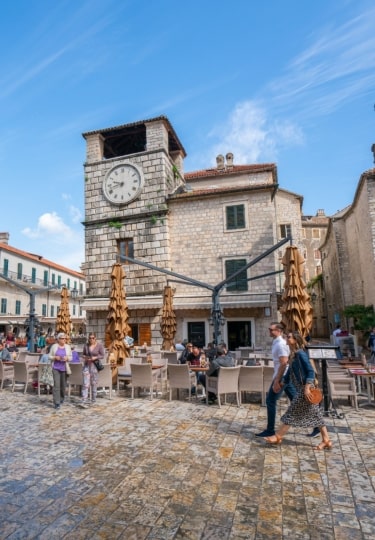Tucked into the innermost tip of the Bay of Kotor, the town of Kotor is every bit as dazzling as Montenegro’s undulating Adriatic coastline.
There are plenty of things to do in Kotor for culture lovers, with travelers barely able to turn a corner without bumping into another ancient church or historic landmark. Kotor also offers plenty to do for more active visitors, including hiking in national parks and kayaking and swimming in the beautiful bay.
From exploring wineries to relaxing on glorious beaches, and hiking up Lovćen Mountain, discover the best things to do in Kotor on vacation.
Wander Kotor Old Town
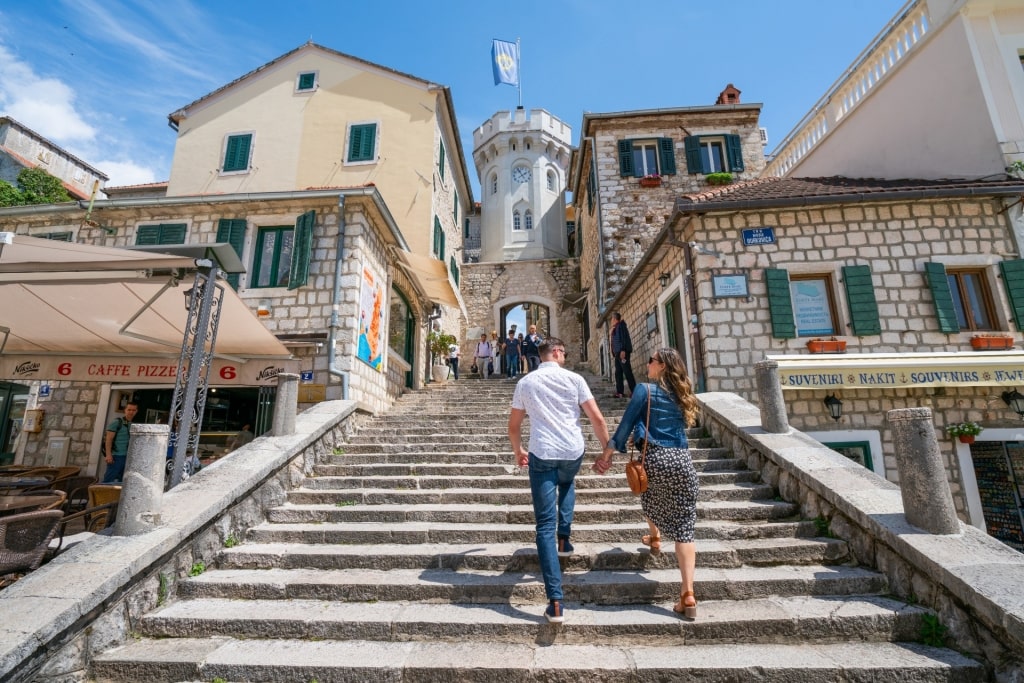
Old Town
One of the most satisfying things to do in Kotor, especially for first-time visitors, is to explore the enchanting Old Town, defined by apricot-hued rooftops, Romanesque churches, and pretty squares.
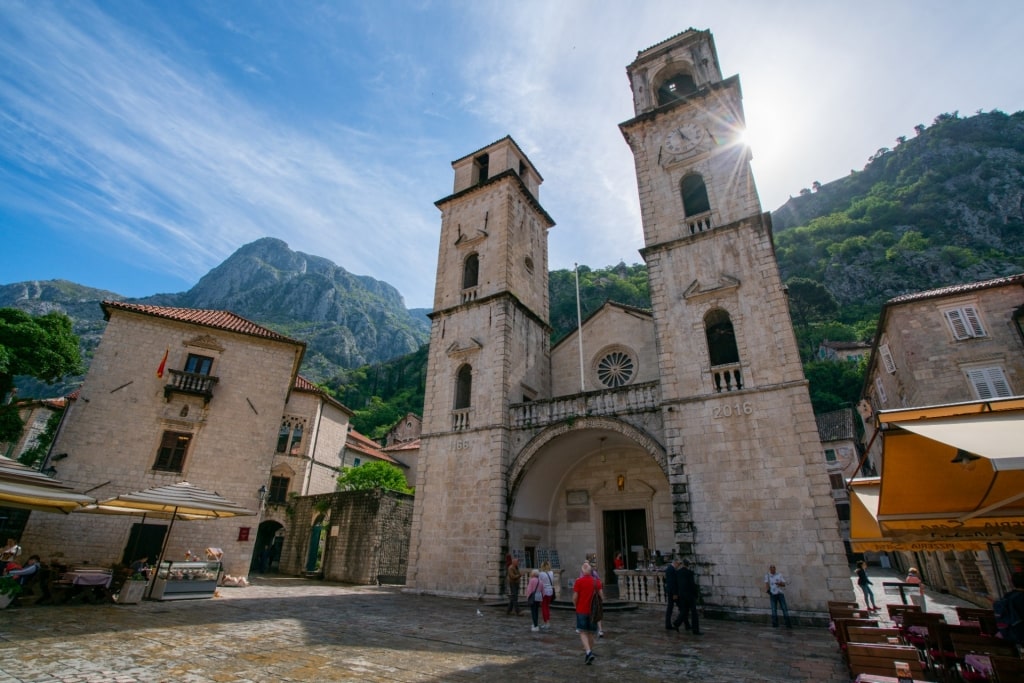
Cathedral of St. Tryphon
Start by visiting the Cathedral of St. Tryphon, which towers above the higgledy-piggledy Old Town. Built in the 12th century on the site of an earlier church, the cathedral has been rebuilt over time due to damage caused by earthquakes. St. Tryphon’s twin bell towers were added in the 17th century following a fire that devastated the front of the building.
Admire the cathedral’s treasured gilded altar, baroque frescoes, vaulted ceilings, and slender columns. Wander upstairs to the Sacral Art Museum to view paintings and artifacts, including a wooden crucifix from the 12th century.
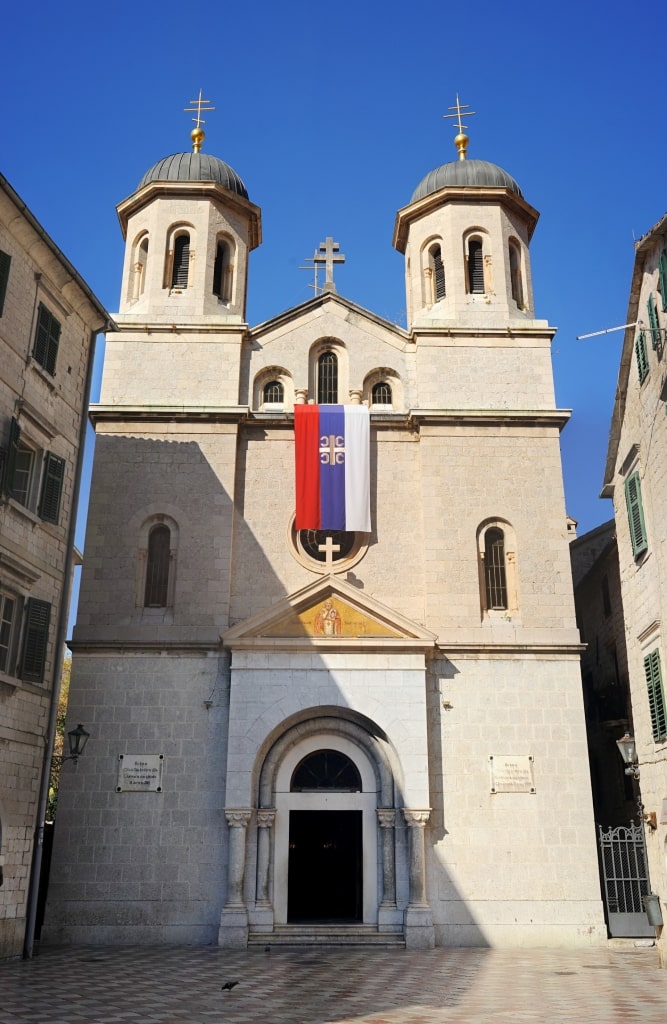
St. Nicholas Church
Visit one of the newer buildings in the Old Town, the dashing St. Nicholas Church, an Orthodox church built at the start of the 20th century.
You could also stop by the Maritime Museum to explore the country’s seafaring history. Antique maps, models of old galleys and sailboats, and navigational instruments are on exhibit.
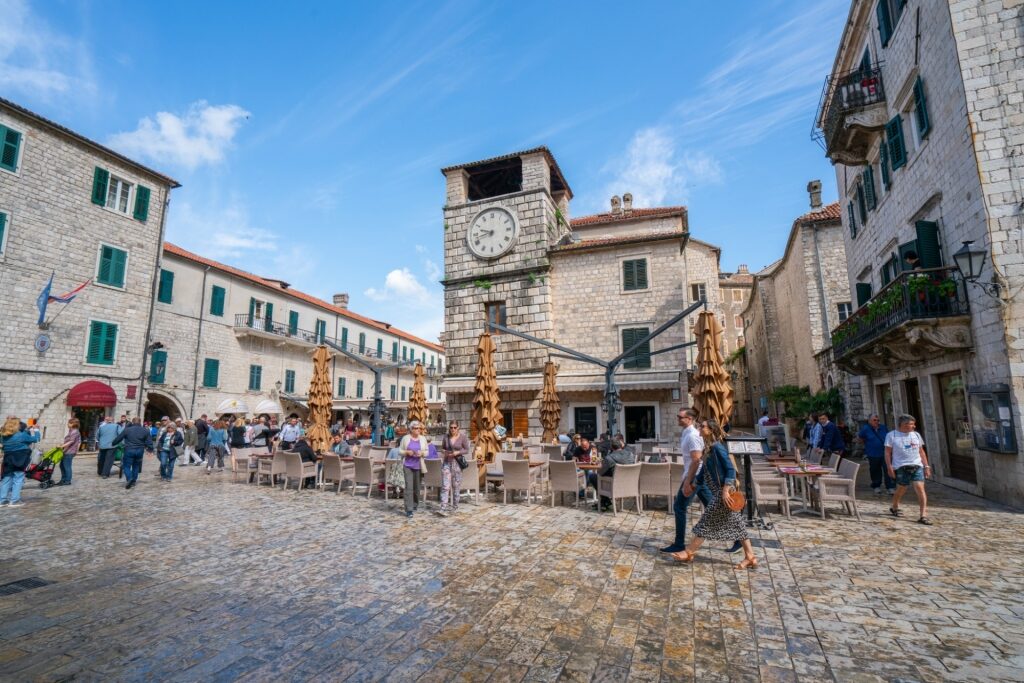
Old Town
Save time for shopping, too. Kotor Old Town’s maze of narrow streets are lined with ceramic, jewelry, and antique stores. Afterward, take a seat at a pavement café to savor dishes of stuffed squid, grilled octopus, and freshly made flatbreads soaked in olive oil.
Bask on Zanjice Beach
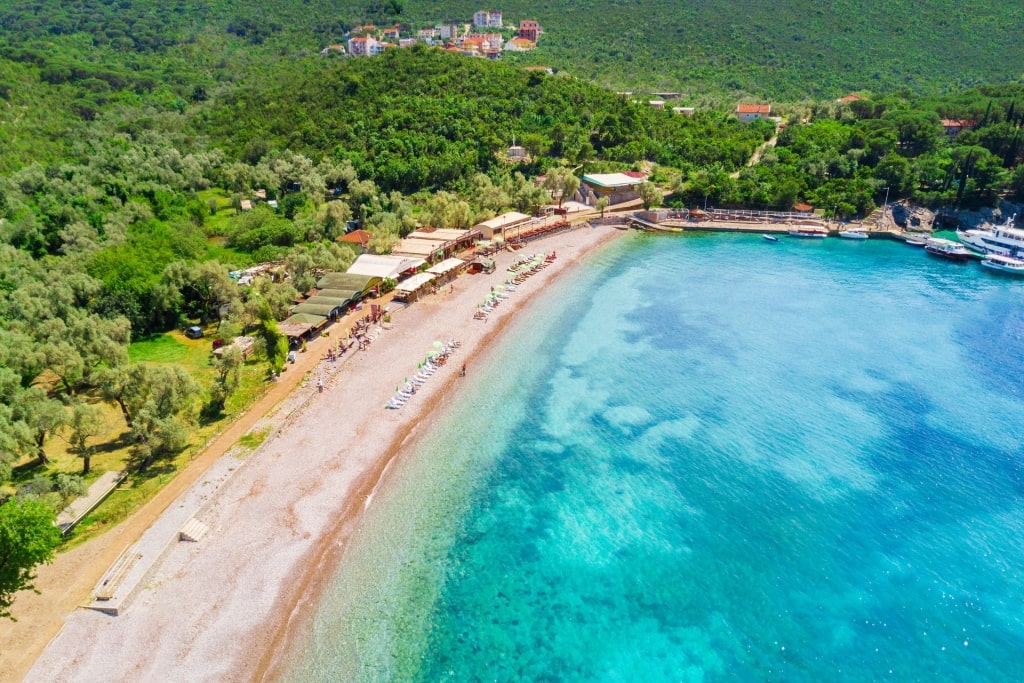
Zanjice Beach
The early 19th-century British poet Lord Byron once wrote: “The most beautiful merging of land and sea occurred at the Montenegrin seaside.” He was on the mark; spending time at the Montenegrin seaside is one of the best things to do in Kotor.
Head to Zanjice Beach, one of the best beaches in Montegro, on the Lustica Peninsula. Creamy-colored pebbles fill this crescent-shaped patch, just a 40-minute drive west of Kotor.
Wear aqua shoes and enjoy a refreshing dip in the clear, aquamarine water. Relax on a sun lounger and take shade under a parasol. If you’re feeling more active, hire a jet ski or enjoy a walk around the green headland.
You’ll find a couple of casual restaurants right on the beach serving salads, seafood, and pizzas.
Sail to Our Lady of the Rocks
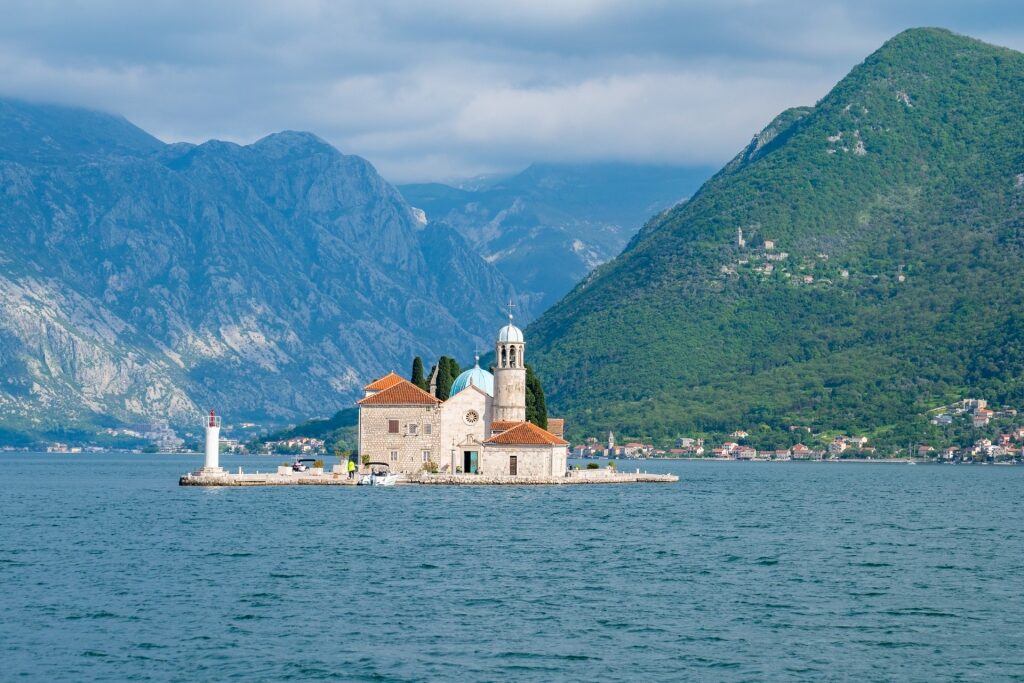
Our Lady of the Rocks
One of the best places to visit in Montenegro is the tiny island of Our Lady of the Rocks, near the town of Perast.
To reach the island, travelers can either take a private taxi boat from Kotor or the local ferry service from the island’s nearest town, Perast.
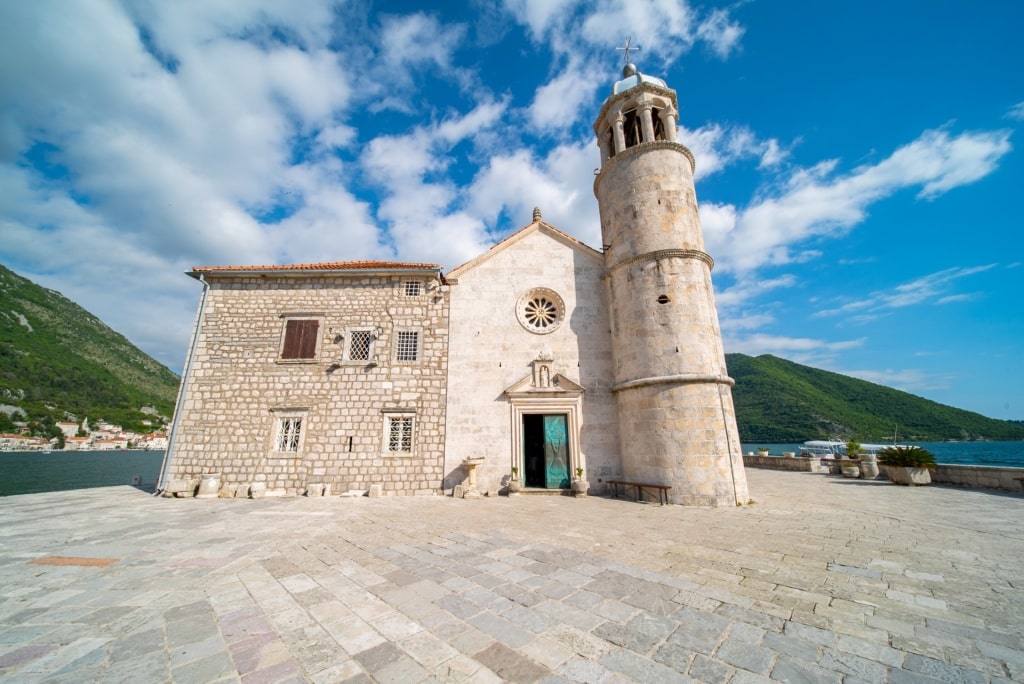
Our Lady of the Rocks
The island’s church, featuring a circular tower and domed roof, shimmers on the emerald-green water. According to legend, the island was little more than a pile of rocks when two local fishermen discovered an image of the Virgin Mary here in 1452. This led to a small Orthodox chapel being built, later replaced by a Catholic church built by the Venetians in the 17th century.
The showpieces of the church include a 15th-century icon of Virgin Mary by Lovro Dobričević and a Carrara-marble altar by Genovese sculptor Antonio Capelano. Once you’ve explored the church, stop by the small museum on the island to learn about the history of Perast.
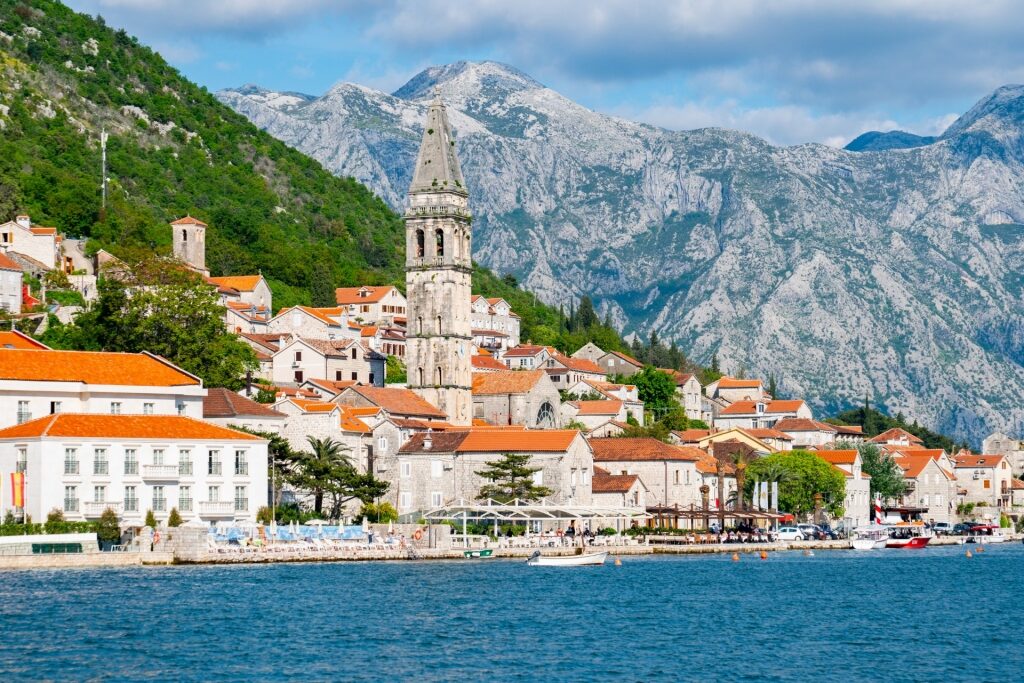
Perast
One of the best things to do in Kotor is to relax in Perast. Do this at a waterfront restaurant after your trip to Our Lady of the Rocks.
Read: Best Eastern European Cities to Explore
Enjoy a Scenic Drive to Lovćen Mountain

Lovćen Mountain
Located within Lovćen National Park, this dramatic mountain offers spectacular views of Montenegro’s craggy landscape from its 5,738-foot perch.
Lovćen’s terrain is covered in dense green beech, oak, and linden forests, home to around 2,000 plant species.
Deer, wolves, bears, and wild boars, plus around 200 bird species, and 11 reptile species are also found in this wild corner of Europe.

Petar II Petrović-Njegoš mausoleum
Among the action-packed activities on offer are hiking, quad biking, zip-lining, and rock climbing. For a more serene path to the peak, drive to the mausoleum of former Montenegrin ruler and poet Petar II Petrović-Njegoš.
At 5,446 feet high, it’s the highest mausoleum in the world. Drive to the mausoleum’s parking lot and from there walk to the tomb. Be warned, though, there are 461 steps to climb.
Explore Skadar Lake National Park
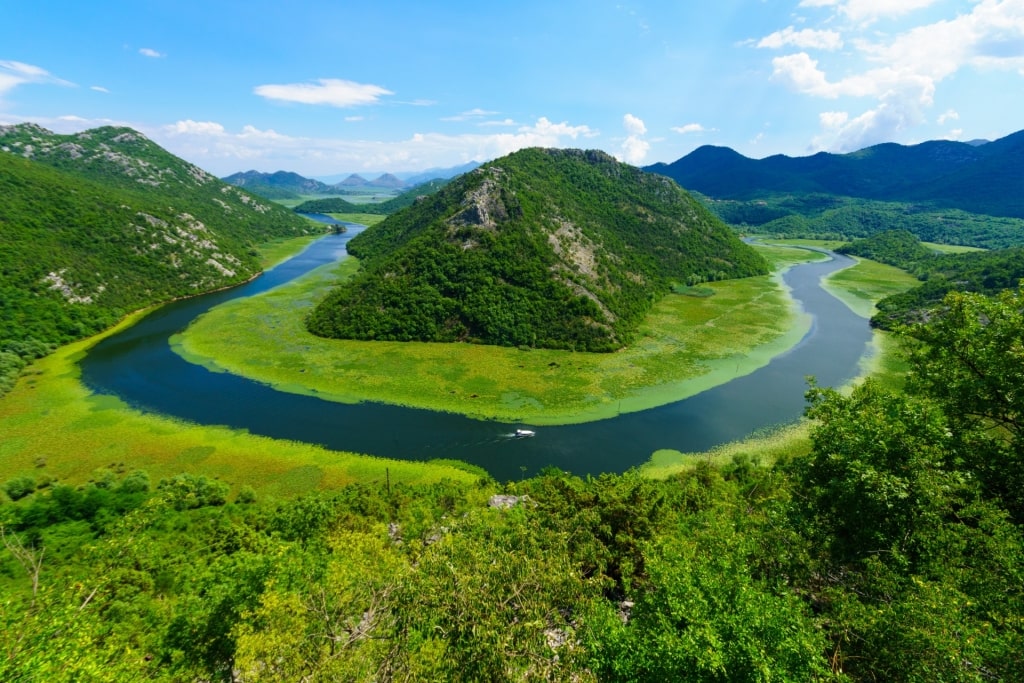
Skadar Lake National Park
Straddling Montenegro and Albania, Skadar is home to mountains, monasteries, wineries, and on the lake, thousands of green water lilies.
Make the one-hour journey from Kotor to Skadar Lake National Park, stopping at Pavlova Strana Viewpoint on the northwest tip of the lake. Here you’ll witness magnificent postcard views of the Rijeka Crnojevića river and the coast of Skadar Lake.
Bird watching is popular in Skadar Lake, with five ornithological stations in locations including Grmožur and Pančevo Oko.
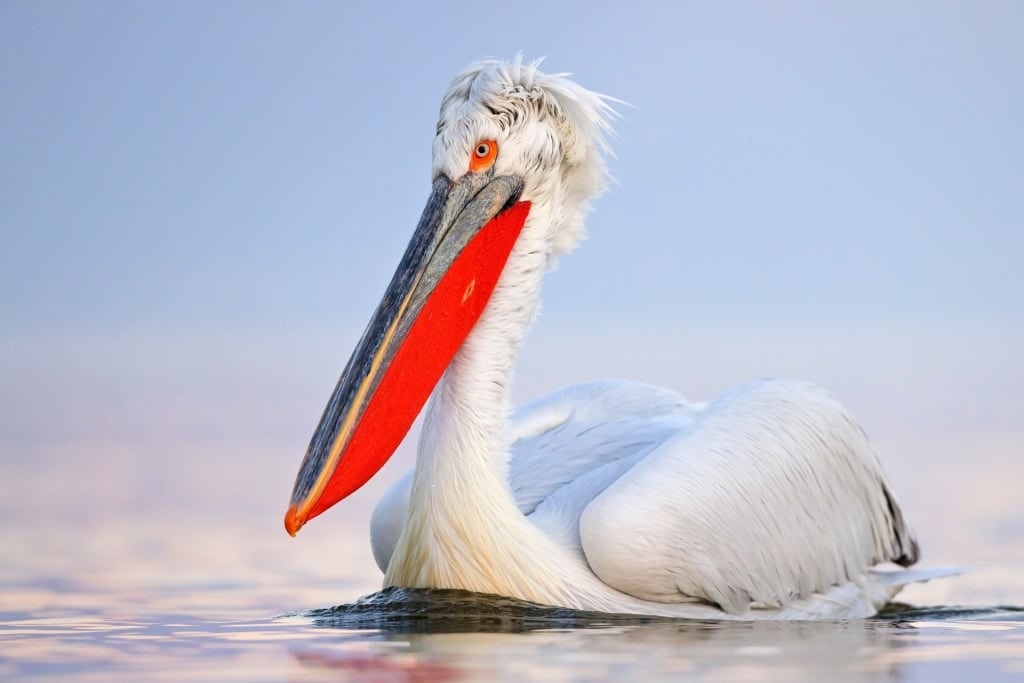
Dalmatian pelican
Skadar National Park attracts hundreds of species, including little egret, white spoonbill, cormorant, and the world’s largest freshwater bird, the rare and endangered Dalmatian pelican.
There are also 50 species of fish and three types of snakes that reside in Skadar Lake. To take in the lake’s wildlife, you could join a tranquil boat tour. Standup paddle boarding, biking, and hiking are also popular activities.
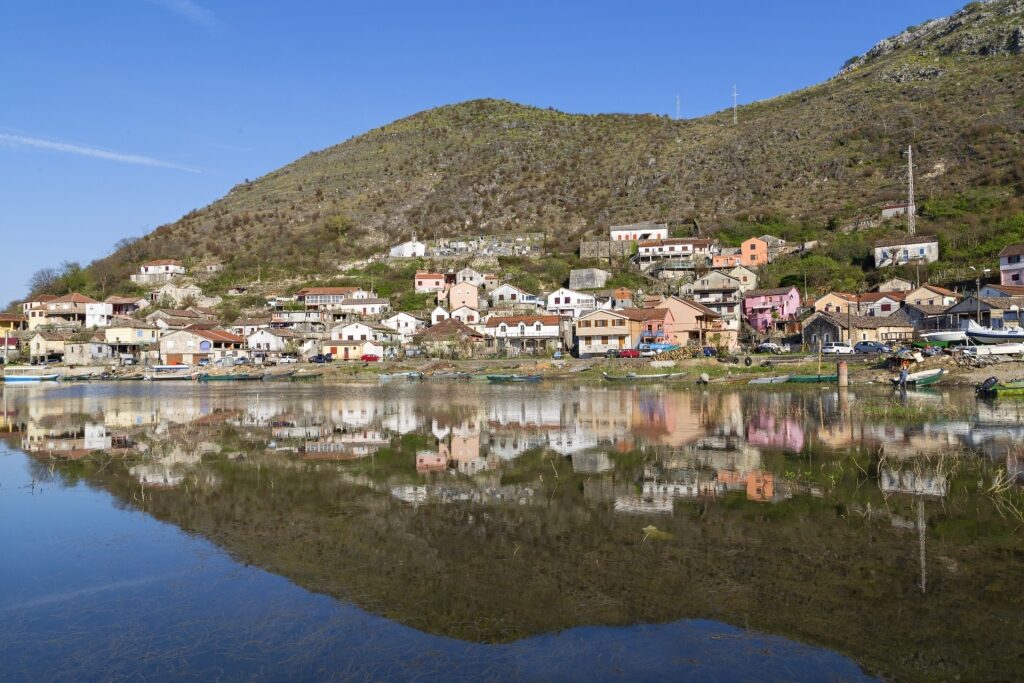
Vranjina
Stop in the village of Vranjina where you could rent a boat, tour Vranjina Monastery, and learn more about the lake and its ecosystem at the visitor center.
Try the local specialty, smoked, fried or broiled carp, one of the lake’s most common fishes.
Restaurant Silistria in the attractive village Virpazar is a top-rated spot.
Kayak in Kotor Bay
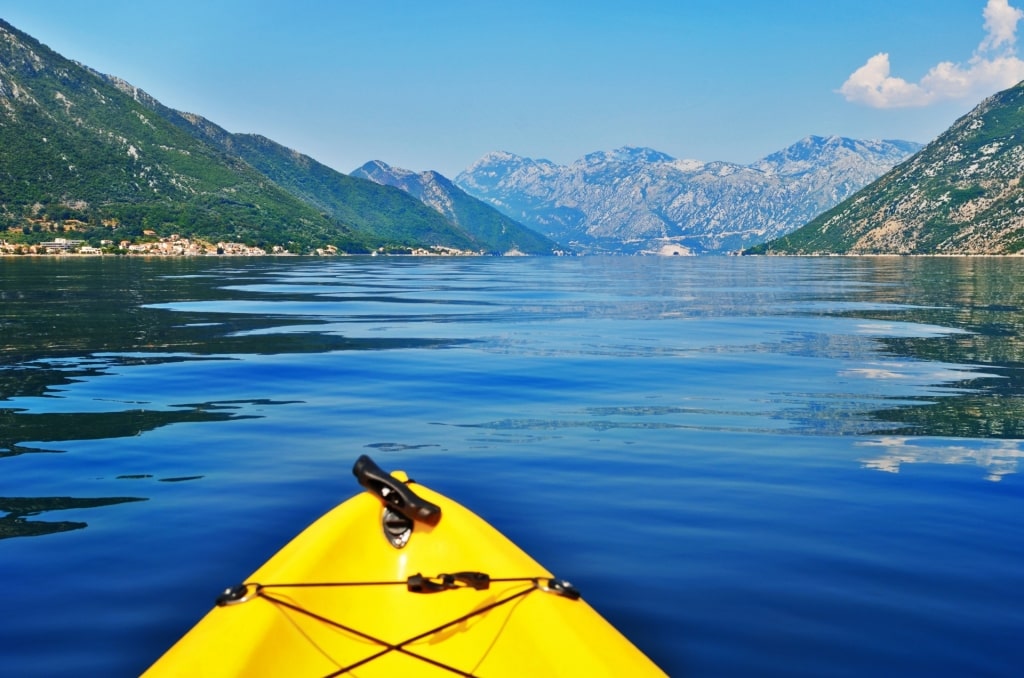
Kayaking in Kotor Bay
Take in the breathtaking scenery of the fjord-like Kotor Bay, known locally as “Boka”, on a kayaking trip.
Hemmed in by steep cliffs, Boka’s shoreline is illuminated by a string of villages and towns, including Kotor, Risan, Tivat, Perast, Prčanj, and Herceg Novi. You’re technically on the Adriatic Sea here—but as the bay extends 17 miles in from the coast, there’s actually a sense of being on a dramatic fjord.
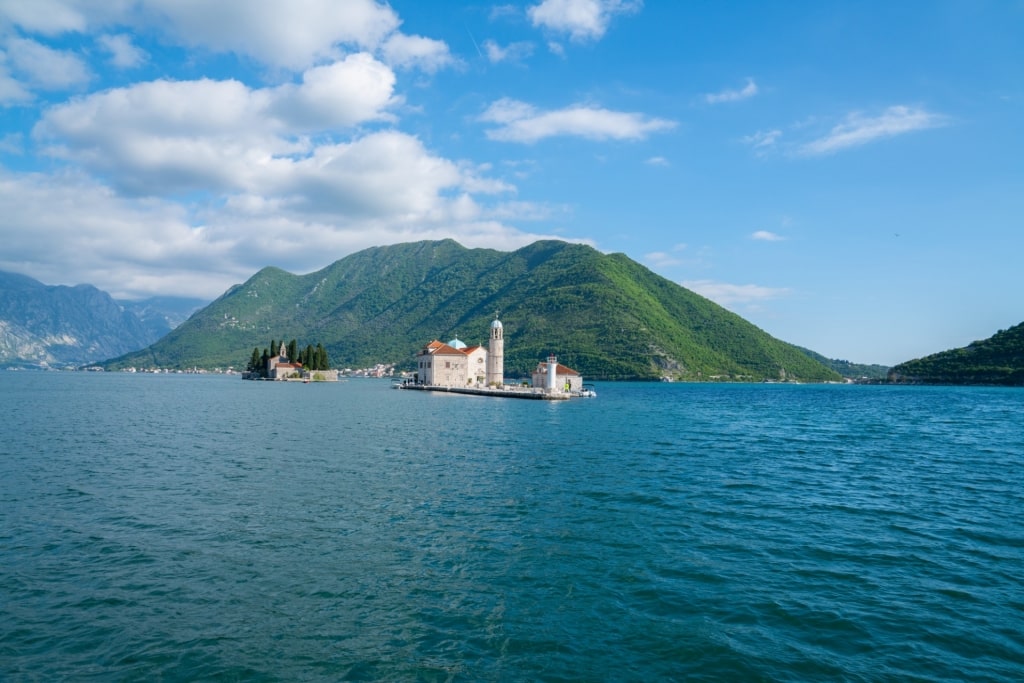
Our Lady of the Rocks
Join a guided session from Kotor Beach and you could paddle for miles in the bay’s inky waters. Head for the two tiny islands, Our Lady of the Rocks and St. George, and enjoy a break at one of the bay’s beaches, Verige or Morinjska plaža.
Remember to wear swimwear so you can cool off with a dip in the sun-dappled water.
Go Wine Tasting
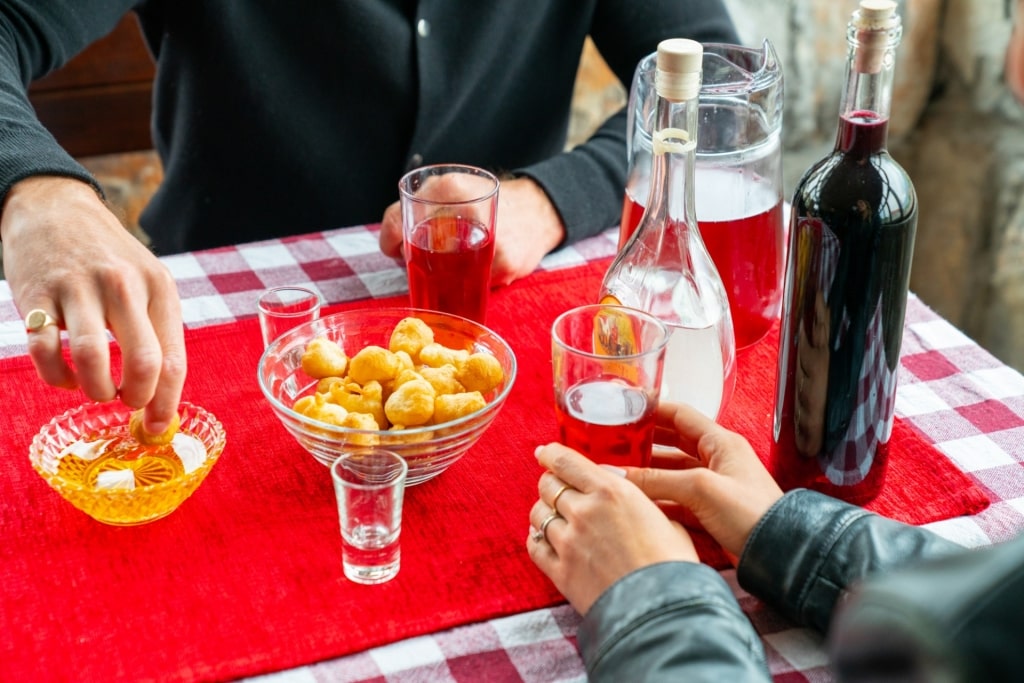
Wine
Thanks to its warm Mediterranean climate, Montenegro’s rugged landscape is crisscrossed with verdant vineyards producing delicious wines.
Skirt the Bay of Kotor and travel into the countryside to Winery Dabovic. Have your camera ready to capture the far-reaching mountain views as you head north.
Winery Dabovic is an organic family-owned vineyard in the village of Nudo. The winery was previously named Imperial Vineyards, noted for supplying wines to the royal court in Vienna during the period of the Austro-Hungarian Empire.
Saunter among the rows of leafy vines and enjoy a food and wine pairing at the winery’s restaurant. In addition to wines, the organic farm produces vegetables, honey, and dairy products.
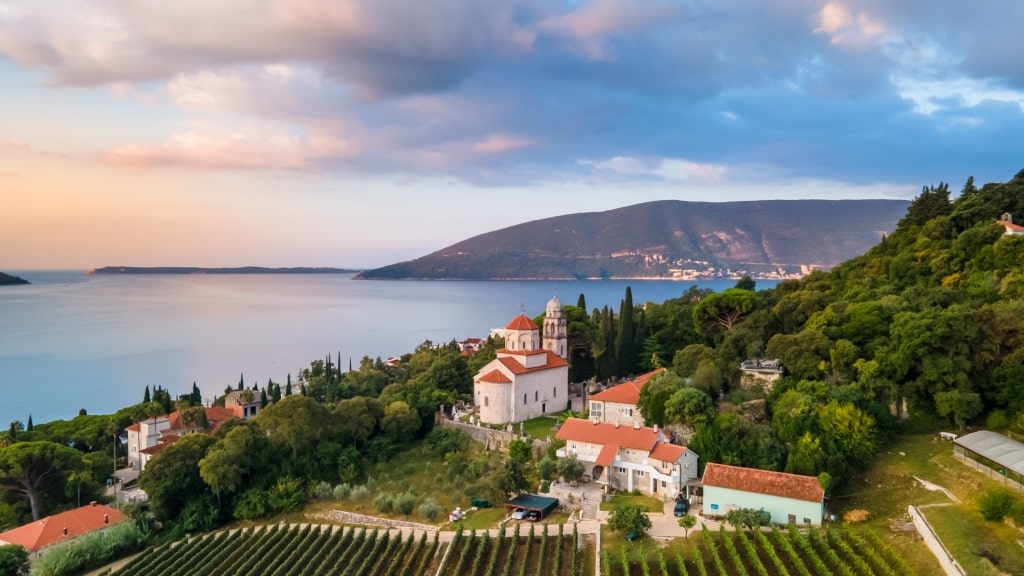
Savina Winery
You could also visit Savina Winery, next to Savina Monastery, on a hillside in the Bay of Kotor’s north shore. Here, wines are aged in French oak barrels in the estate’s cellar, with merlot, cabernet sauvignon, chardonnay, and a rosé grenache produced.
While Savina Winery is a far more recent setup than Winery Dabovic, this idyllic south-facing spot has been covered in vineyards for centuries. Wine lovers can visit the winery by reservation for a private vineyard and winery tour, wine tasting and food pairing.
Read: Best Places to Visit in the Mediterranean
Discover Glamorous Budva
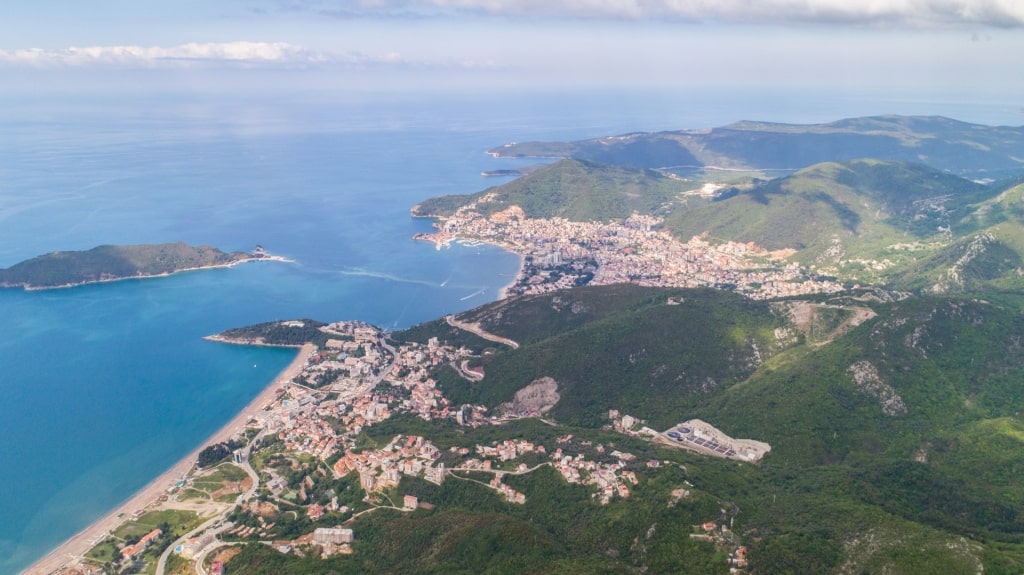
Budva
Glitzy Budva is a starry standout of Montenegro’s yacht-filled riviera. A necklace of beautiful beaches with gin-clear water line Budva’s stretch of coastline, while the marina is bursting with shiny boats.
If you’re in the mood to spend the day at the beach, Slovenska Plaza and Bečići are the largest and most central shores. Lively Jaz Beach is made up of two coves separated by towering cliffs. They all offer sunbeds, parasols, bars, and restaurants.
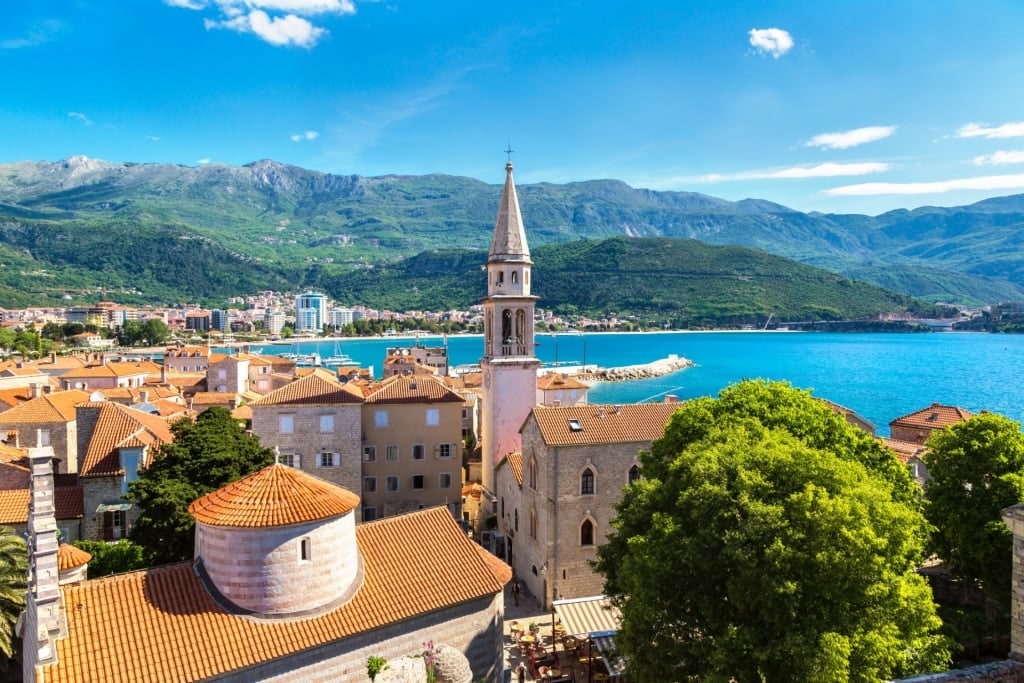
Old Town Budva
You should also spend time strolling around Budva’s Old Town. At 2,500 years old, it’s one of the oldest settlements in the Balkans.
Explore the cluster of terracotta-topped stone buildings and twisting cobbled streets that are encased within the Budva’s ancient city walls. Top-drawer cafés, restaurants, and boutiques lie side-by-side with historic churches and museums.
Climb to San Giovanni Fortress
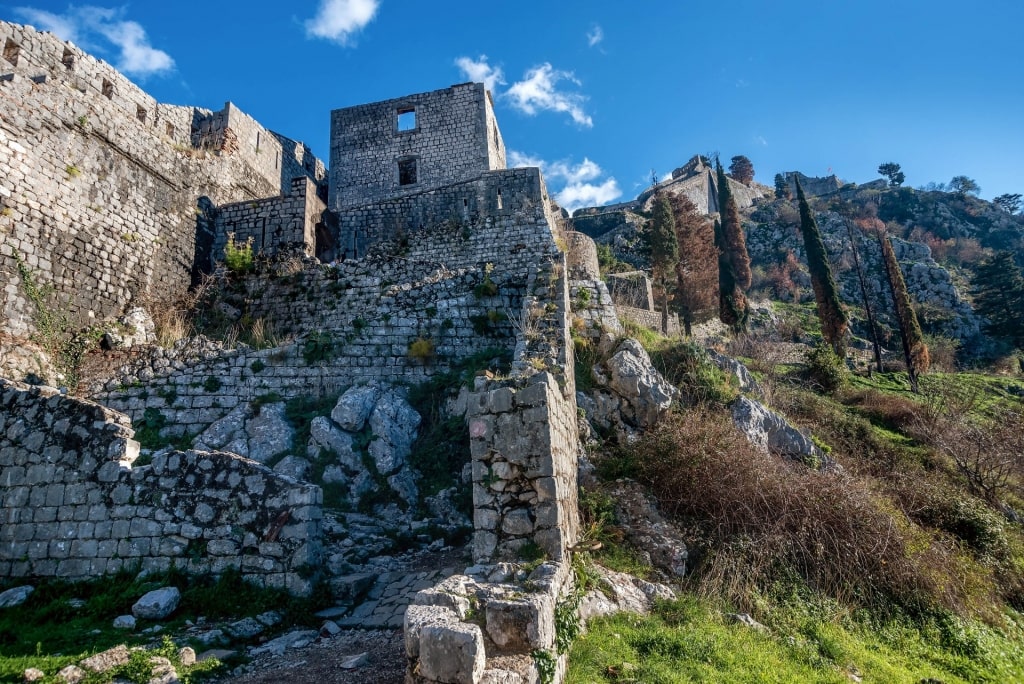
San Giovanni Fortress
The ruined San Giovanni Fortress looms almost 1,000 feet above Kotor Old Town. San Giovanni is part of Kotor’s defensive labyrinth of fortresses, ramparts, walls, and towers, which together have earned UNESCO-listed status.
San Giovanni Fortress is cleverly positioned to offer sublime views of the Old Town and Kotor Bay. To get there, follow the steep, zigzagging route, which coils up the hillside.
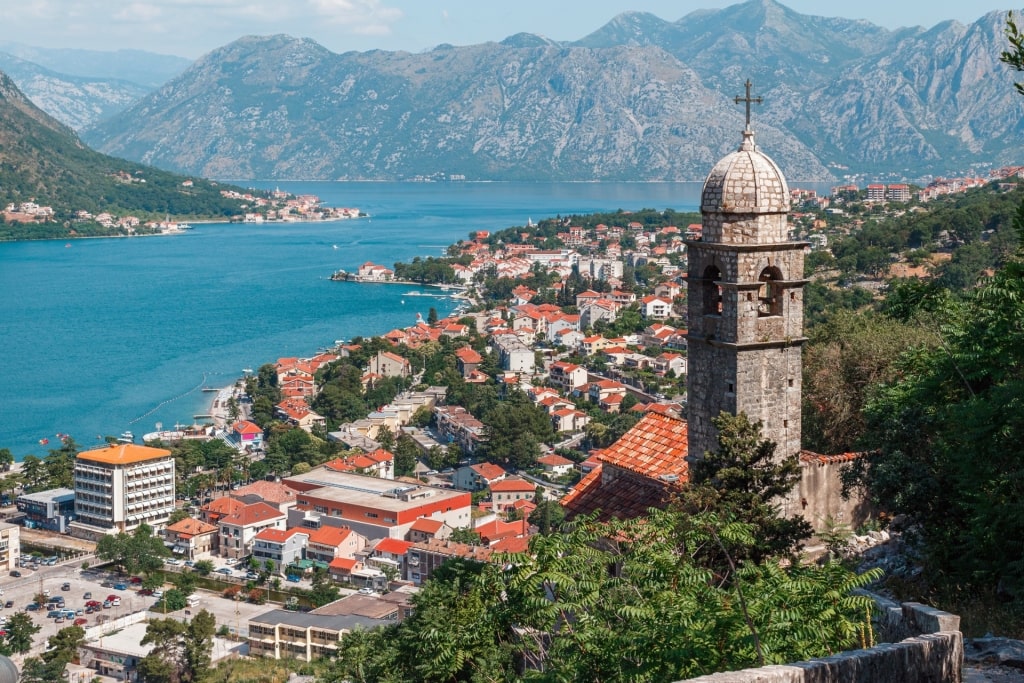
Church of Our Lady of Remedy
Stop at another Kotor landmark, the early 16th-century Church of Our Lady of Remedy, to break the journey.
With over 1,300 steps to climb, you should take the walk at a leisurely pace and carry plenty of water. Wear a sun hat, especially in the peak of summer (July and August) when Kotor can feel extremely hot.
Journey to the Blue Cave
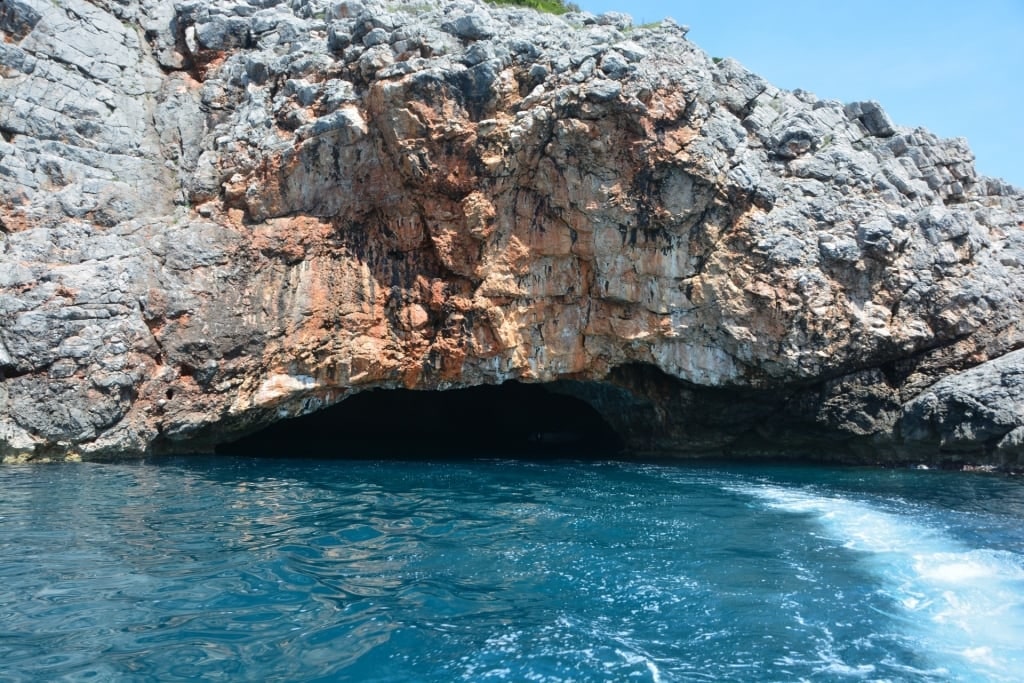
Blue Cave
The Blue Cave is carved into Montenegro’s gorgeous Lustica Peninsula, a stretch of coastline that’s dotted with natural grottoes. The Blue Cave reaches 30 feet high and is believed to be the largest of the peninsula’s caves.
The best way to reach the Blue Cave is via a leisurely sojourn from Kotor, which will take you through the Bay of Kotor and out into the Adriatic Sea.
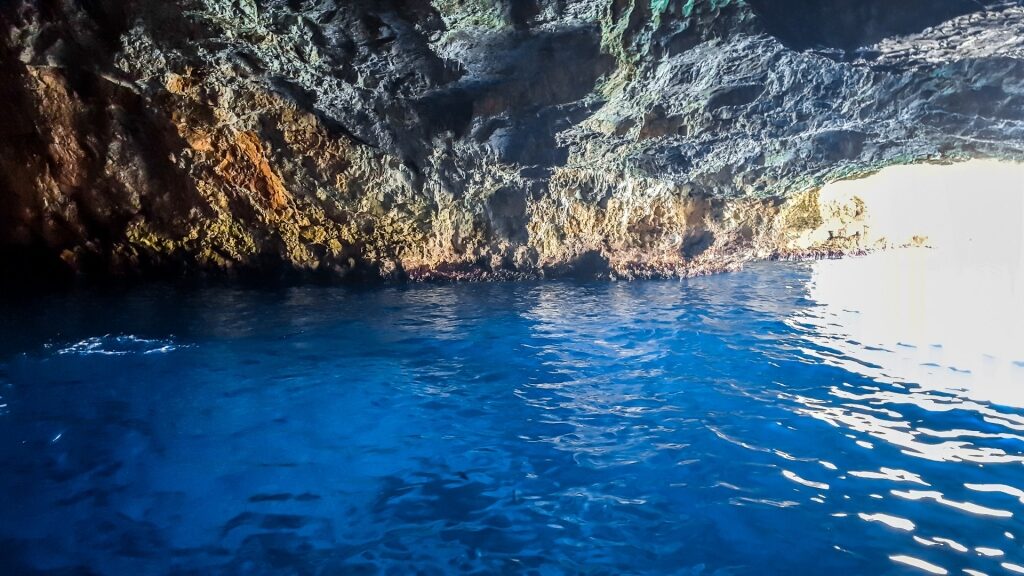
Blue Cave
Small vessels, canoes, and kayaks can sail directly into the twinkling cave. The water’s inviting sapphire hue is likely to tempt you in to swim and snorkel.
Drive to the Village of Njeguši

Njeguši
The pastoral village of Njeguši lies on the slopes of Mount Lovćen, a 45-minute drive east of Kotor.
The twisting drive to Njeguši passes through Kotor Serpentine, a stretch of road featuring several back-to-back elbow-shaped bends. Find a safe observation spot to pull over and gaze at the sweeping views that stretch over the Bay of Kotor.
Njeguši is best known as the birthplace of Petar II Petrović-Njegoš, Montenegro’s influential leader, or prince-bishop, and a poet whose lofty mausoleum lies atop Mount Lovćen.
You could explore the two-story house where Njegoš was born, now a museum. The museum displays ethnographic artifacts and small pieces of crafted weapons.

Njeguši
A wander through the mountain village will reveal several restaurants serving the town’s indulgent delicacies; cheese, honey, and Pršut, a dry-cured ham similar to Italy’s prosciutto.
Make a lunch reservation at Nevjesta Jadrana, sitting at an altitude of 3,116 feet on the town’s main road. Sample the Njeguški pršut, Njeguški sir (cheese), and honey or cheese fritters with a carafe of ruby-red Vranac, the region’s rich and fruity red wine.
Trace Kotor’s Old Town Walls
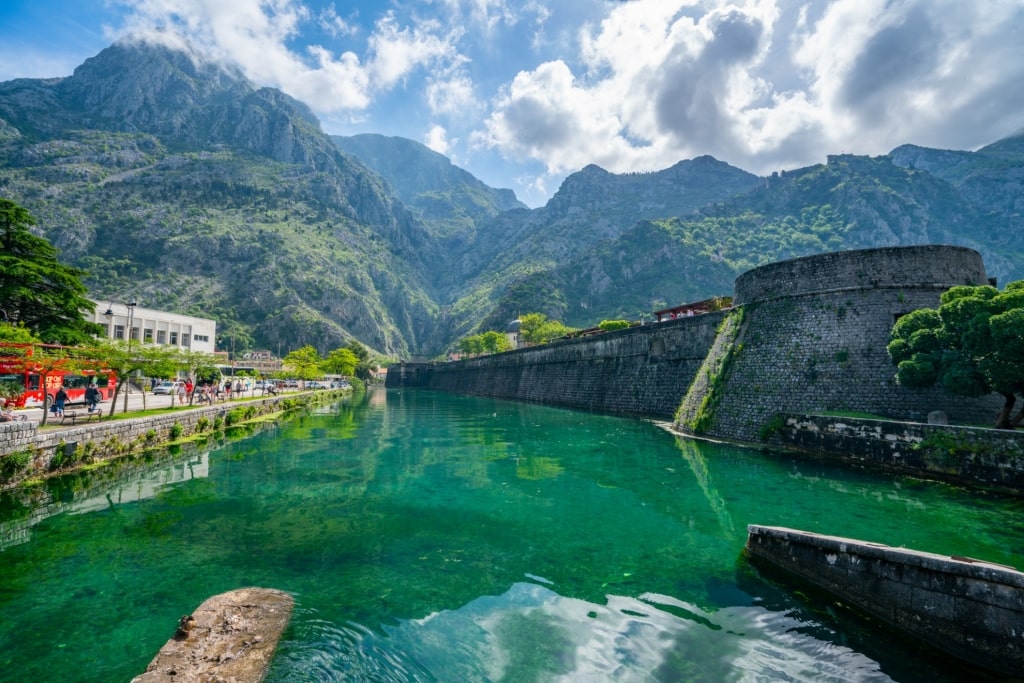
Old Town
Kotor’s triangle-shaped Old Town is guarded by a series of forts, gates, and walls. Tracing sections of the walls is one of the best things to do in Kotor to really appreciate the breadth of this medieval fortification.
Follow the palm tree-lined city walls south from the circular Kampana Tower. Located at the northwest tip of the triangle, this imposing bastion rises from the green-blue lagoon.
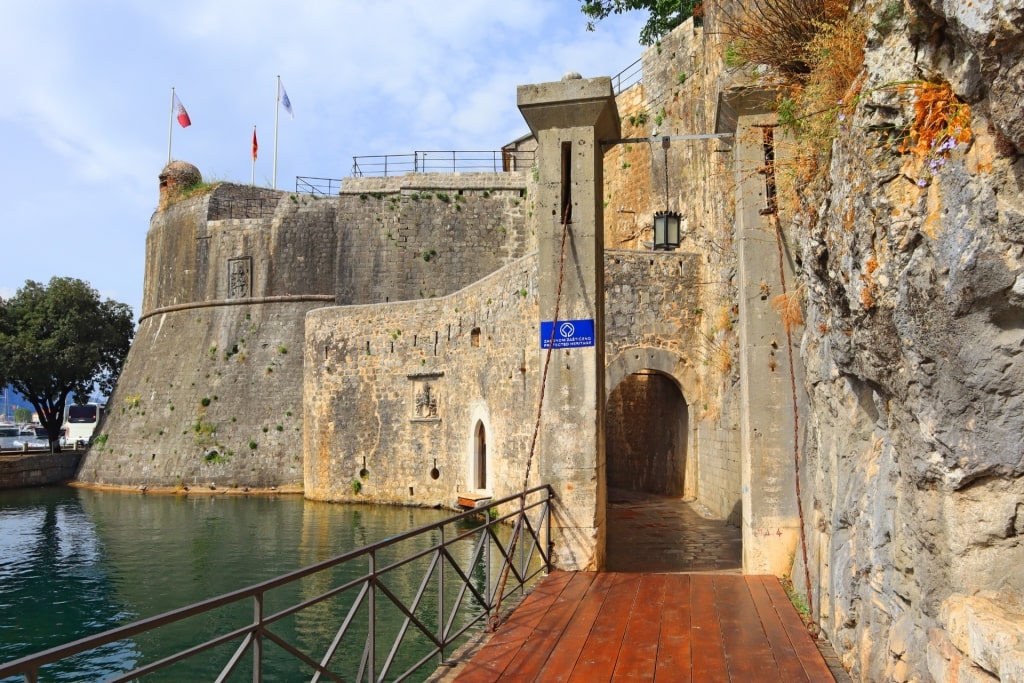
Gurdic Gate
From the Sea Gate—the Old Town’s main gate, facing the water—continue to the southern tip of the “triangle”. Marvel at the Gurdic Gate, also called the South Gate, and the viridescent Gurdić Spring.
Gaze up towards San Giovanni Fortress and you’ll see the remains of more walls and bastions, snaking up the green hillside.
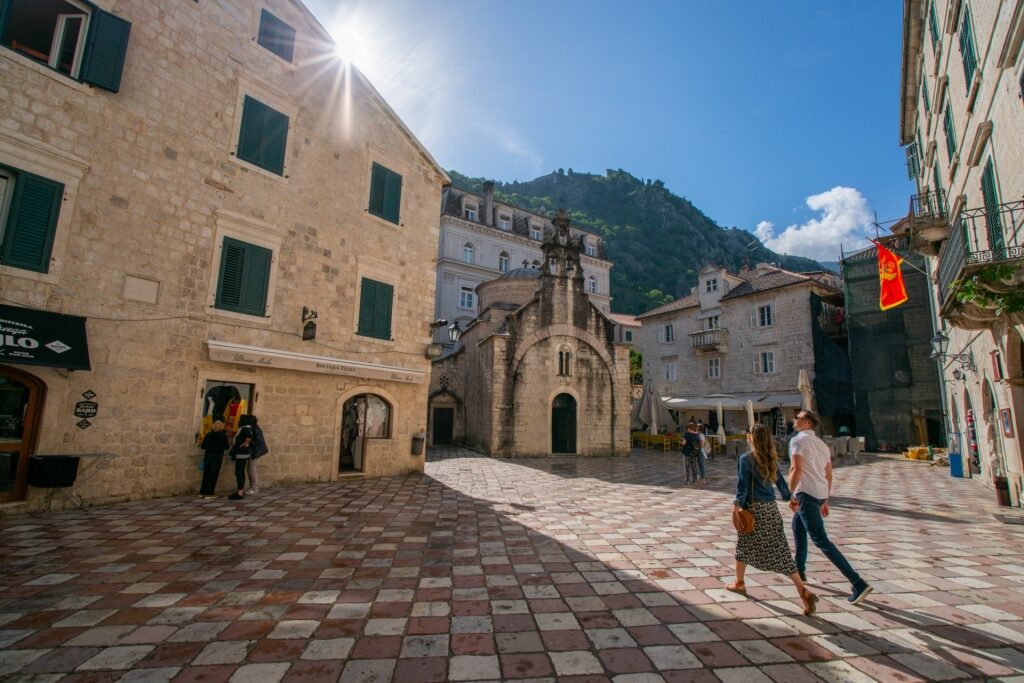
Old Town
Kotor, Montenegro, offers nature, gastronomy, culture, and spectacular scenery. Explore Celebrity’s cruises to Montenegro to discover this beguiling corner of the eastern Mediterranean.
